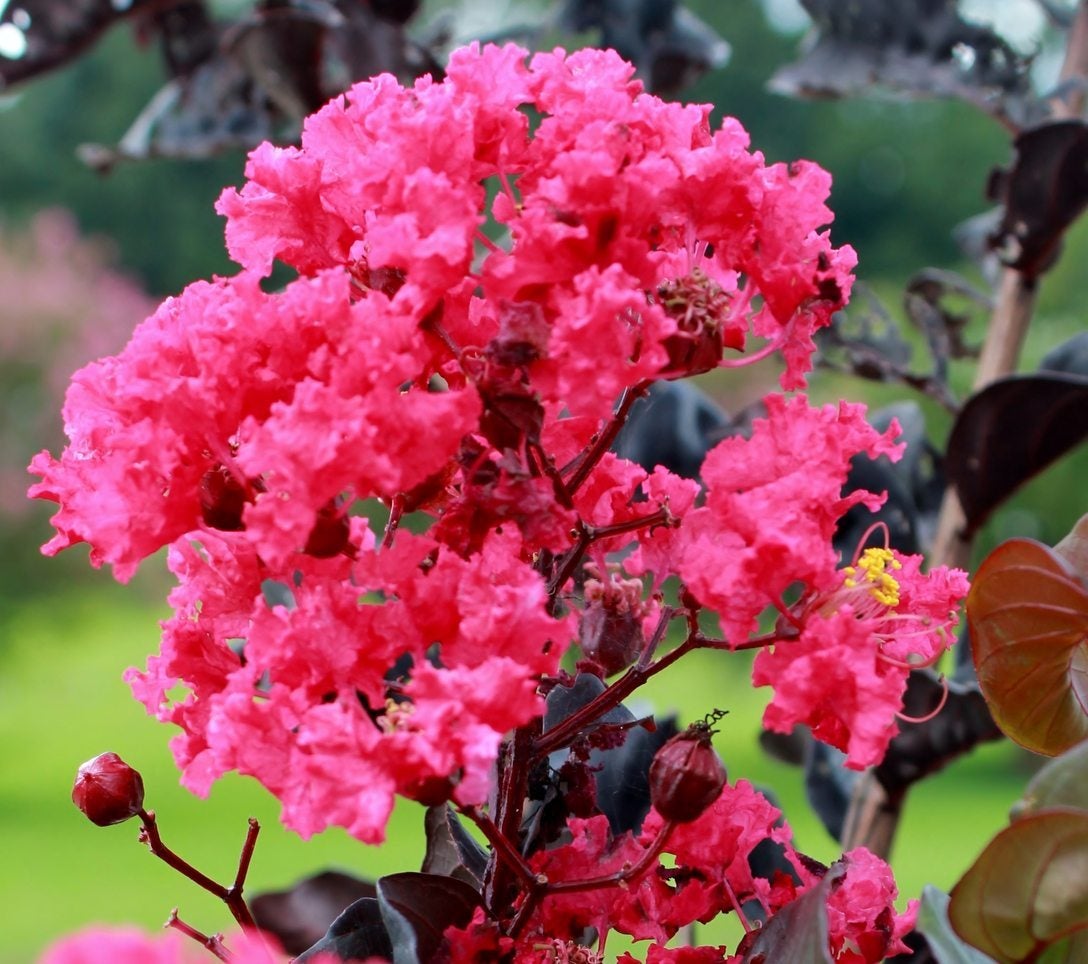Crepe Myrtle Pest Control: Treating Pests On Crepe Myrtle Trees


Crepe myrtles are iconic plants of the South, popping up virtually everywhere in USDA hardiness zones 7 through 9. They’re sturdy and beautiful. They make excellent large landscape bushes or can be pruned into a tree form, adding even more versatility. Because of their flexible nature, crepe myrtle trees are bothered by very few problems or pests. Even so, there may come a day when you’re forced to do battle with pests on crepe myrtle, so let’s explore those right now!
Common Crepe Myrtle Pests
Although there are a number of occasional crepe myrtle insect pests, a few are overwhelmingly common. Knowing how to identify and treat these critters when they appear can help keep your plant healthy and happy for years to come. Here are the top contenders and their warning signs: Crepe myrtle aphids. Of all the possible insects to have on your plants, these are the easiest when it comes to crepe myrtle pest control. If you turn over your crepe myrtle leaves, you’ll see lots of small, soft-bodied yellow-green insects feeding – these are the crepe myrtle aphids. You might also notice that the leaves are sticky or covered in a black mildew; both are side effects of this creature. A daily blast with a garden hose on the underside of the leaves is an effective and environmentally friendly way to destroy whole aphid colonies. An imidacloprid drench can also help but should be reserved for very bad cases because bees and other pollinators can also be affected. Spider mites. The first thing you’ll probably notice about spider mites are the tiny, fine strands of webbing they leave behind. You won’t see these tiny sapsuckers without magnification, but it doesn’t matter if you can see them or not. Treat with insecticidal soap or neem oil for best results but wait until evening to apply either or use a shade to protect your plant from potential burns. Scale. Scale insects hardly look like insects at all and may instead appear to be cottony or waxy growths on your crepe myrtle. However, if you have a sharp blade, you can lift the insect’s camouflaged cover and find its soft body underneath. They’re closely related to aphids, but because of the protective barrier, they’ll need stronger stuff. Neem oil is particularly effective for most scale insects. Japanese beetle. These shiny green-black beetles are as unmistakable as they are frustrating to try to treat. Spraying with pesticides like carbaryl can knock them back, and drenching with imidacloprid can stop Japanese beetle feeding, but ultimately, both methods can destroy local pollinators in a big way. Japanese beetle traps placed 50 feet away from your bushes can help cut the population down and treating your yard with milky spore can help destroy grubs before they mature.
Sign up for the Gardening Know How newsletter today and receive a free copy of our e-book "How to Grow Delicious Tomatoes".

Kristi Waterworth was a regular contributor to Gardening Know How for many years, answering countless queries on plant pests and diseases.